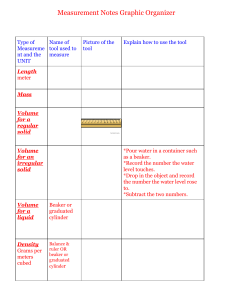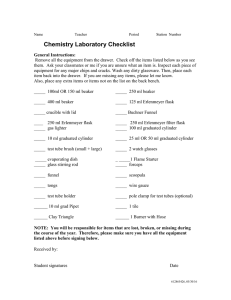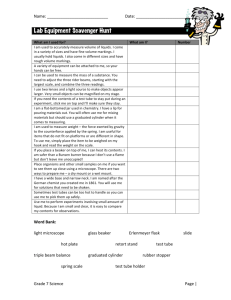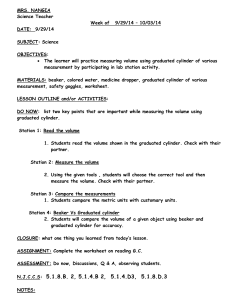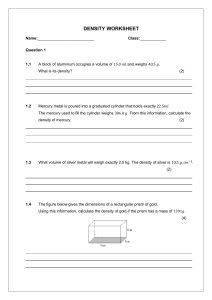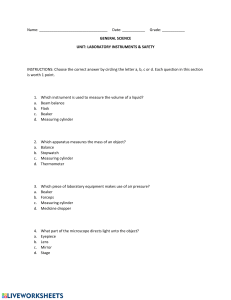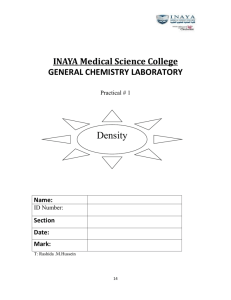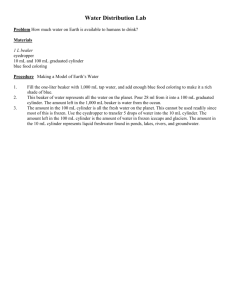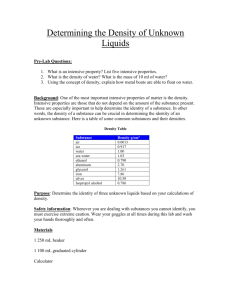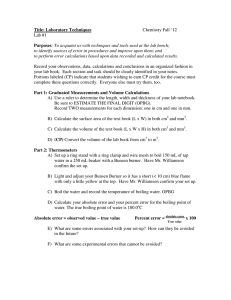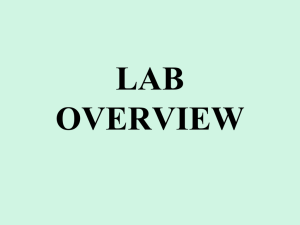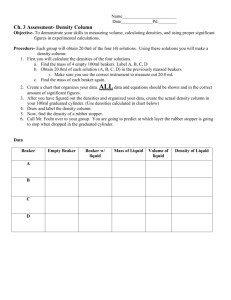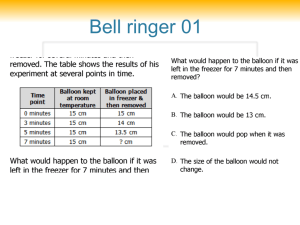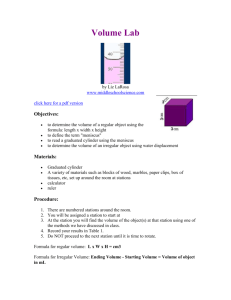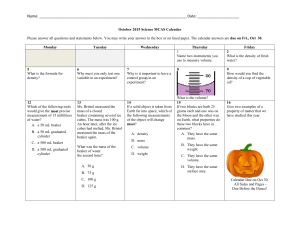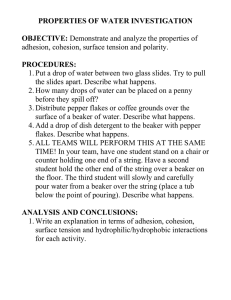Lab Density of Water
advertisement
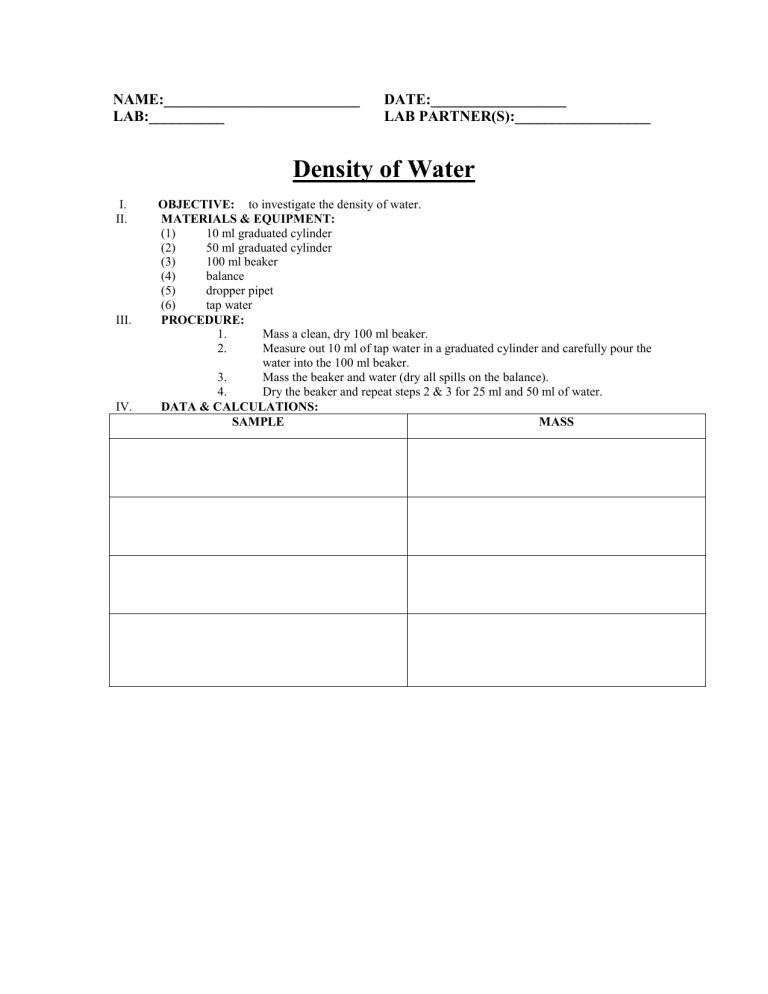
NAME:__________________________ LAB:__________ DATE:__________________ LAB PARTNER(S):__________________ Density of Water I. II. III. IV. OBJECTIVE: to investigate the density of water. MATERIALS & EQUIPMENT: (1) 10 ml graduated cylinder (2) 50 ml graduated cylinder (3) 100 ml beaker (4) balance (5) dropper pipet (6) tap water PROCEDURE: 1. Mass a clean, dry 100 ml beaker. 2. Measure out 10 ml of tap water in a graduated cylinder and carefully pour the water into the 100 ml beaker. 3. Mass the beaker and water (dry all spills on the balance). 4. Dry the beaker and repeat steps 2 & 3 for 25 ml and 50 ml of water. DATA & CALCULATIONS: SAMPLE MASS SAMPLE Volumes MASS 10.0 ml of water m = m(b+w) – m(b) 25.0 ml of water m = m(b+w) – m(b) 50.0 ml of water m = m(b+w) – m(b) V. p = m/V d = m/V d = m/V QUESTIONS: (Attach on Separate Sheet) (1) How do the densities of the 3 samples of water compare? (2) What is the density of water? (3) What is the mass of 152 ml of water? (4) What is the mass of 72 cm3 of water? (5) What is the volume of 103g of water? (6) What is the density of 64 g of water? (7) What is the density of 80.25 ml of water? (8) What is the density of 154.7cm3 of water? (9) Calculate the average of the 3 densities from part IV. [Show all work!!!] (10) The density of any amount of water is 1.0g/ml. Using the average you just calculated in question #9, calculate your percent error. [Show all work!!!!] VI. DENSITY Conclusion- In this lab I learned…(restate objective).
